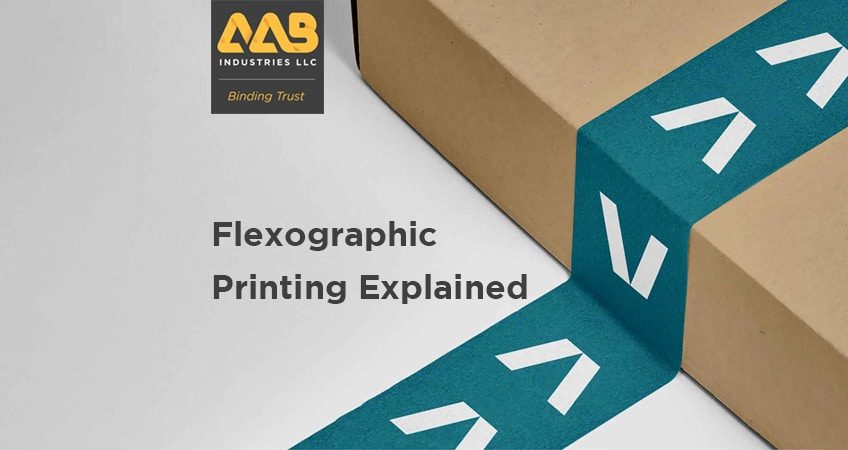Printed tapes are the most common method of giving visibility to brands and products. It helps connect products with the right customers. Though printed tape is one of the most economical ways of brand promotion and marketing, creating quality printing tape is rigorous. Adopting the right methods can develop quality printed tapes.
This article will explain the most common technique used to print adhesive tapes – the flexo printing method.
What is Flexography or Flexographic Printing?
One of the most viable printing methods for adhesive tapes is Flexographic Printing or Flexo Printing. It got the name due to its flexibility that comes from its rubber or plastic-based printing plates. In easy words, it is like a big stamp that rolls over the adhesive tape roll to create the design.
Features of Flexo Printing
- This technique uses rubber, plastic or photopolymer-based printing plates that are mounted on rotating cylinders.
- It features an Anilox roller – a metal-based roller with a small engraving to hold and transfer ink to an adhesive tape surface.
- Flexo printing also features quick-drying ink that ensures smooth, sharp and smudge-free prints.
- Flexo printing is versatile- it does not only work for adhesive tapes. It is great for paper, plastic, and similar surfaces.
Pros of the Flexo Technique
- Safe from external damages like chemical, friction or moisture
- It is quick to apply and quick to dry
- It is ideal for high-volume printing and hence, a cost-effective method
Cons of the Flexo Printing
- Creating the setup and printing plates can be expensive for short-term usage
- Flexo printing can be difficult in case of intricate and complex printing jobs
- In the case of multiple colour prints, maintaining consistent colour can be challenging
- This technique is not suitable for substrates that need high-end finish
What Is Flexo Printing Used For?
It is commonly used for label printing, carton boxes, cardboard boxes, adhesive tapes, papers, newspapers, magazines and gift wrap.
Frequently Asked Questions
What Is Flexo In Printing?
The Flexo word comes from the technique – flexography print. It features flexible rubber/plastic-based printing plates.
What Is The Principle Of Flexo Printing?
Flexo printing works on the principle of transferring ink from an ink tray to a metal roller. The roller then moves to printing plates and then it stamps ink to the material.
What Is An Example Of Flexographic Printing?
Common examples of flexographic printing include box printing, newspaper printing and adhesive tape printing.


